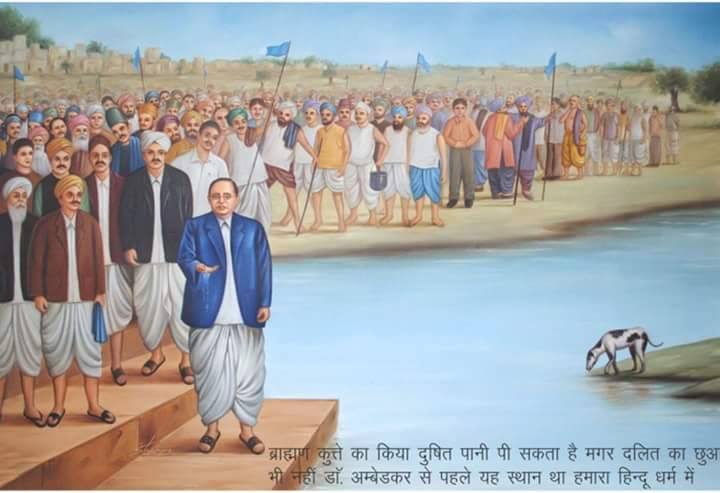
Water and Revolution – Babasaheb Ambedkar and Mahad
If we trace the intellectual history of Babasaheb Ambedkar, we can notice that by the year 1927, he had already read extant theories of many disciplines. He also came up his own theory of caste and theory of annihilation of caste. He was equipped intellectually and began his direct engagement with the social problems as early as 1919. In this exploration, we will try to situate the great protest at Mahad in the context of his plan of the liberation of his people. He was already engaged in getting political seats for the Scheduled Castes and this was to become his lifelong work, but with Mahad, he made it clear that his movement was not for the political rights. His movement was engaged with equal access to all the resources which were denied by the caste system to the majority of India.

The geography was divided on the basis of caste. The so-called untouchables were forced to live beyond the usual confines of the settled villages. The so-called sacred places did not let them have access to them. In other words, the land was divided into the caste lines. Still, the land is divided into the caste lines and the untouchables have no lands as far their ownership was concerned. This has not changed much.
Water, the source of life, was denied to the untouchables. In summary, the good, and to use the language of economics, the public goods were denied to the untouchables. Land, water, air, forests, and similar other public goods are not created by any caste of people. They are given to human beings, but the denial of rights to use them by a few and not by others is already a great division in the society. That is why Babasaheb Ambedkar’s movement was abstract or philosophizing about “deeper” issues of life, it was grounded in the land, water, and other public goods.
The Mahad water tank was the public tank and the government declared that it is open to all. But the caste Hindus did not allow the Untouchables to drink water from it. Babasaheb Ambedkar challenged the caste laws with the civil laws. He won the legal battle, but it took many decades for justice.
But the most important part of Mahad agitation was also political. In it, Babasaheb Ambedkar gave the demonstration of his claims that
“the untouchables are not the Hindus”.
The untouchables were never Hindus. This is exactly he showed to the British when the political representation in India began after 1917. He showed conclusively that the untouchables were the class apart from the Hindus and that their civil and political rights were independent and separate from the caste Hindus.
The Mahad agitation is emblematic for the struggles to come. There is a Mahad in India’s villages even today. There is no access to public goods to the majority of the ex-untouchables. If they claim their rights on the public goods, they meet with the violence and brutalities.
The landmark events of the Ambedkarite movement are coming to life again, but this time, with greater appeal and with this greater appeal, the power they can unleash is multiplied many folds to dismantle the caste system.
Author – Mangesh Dahiwale



+ There are no comments
Add yours